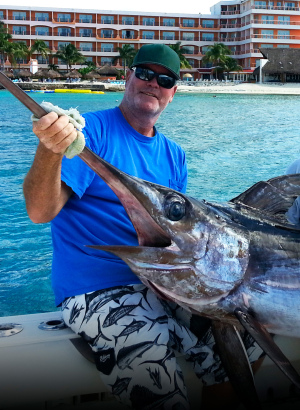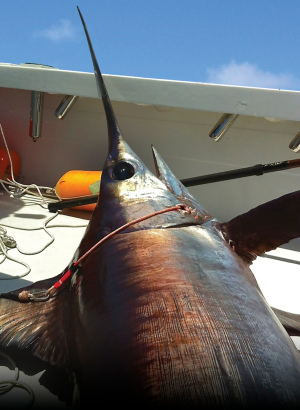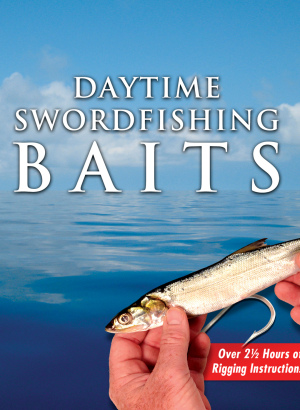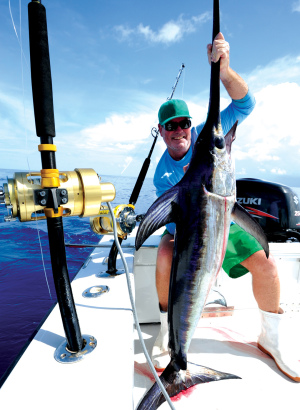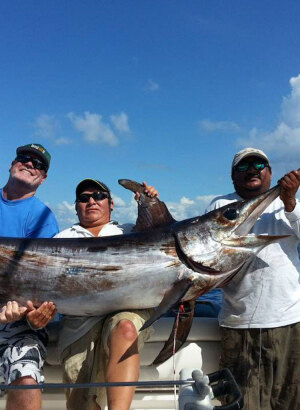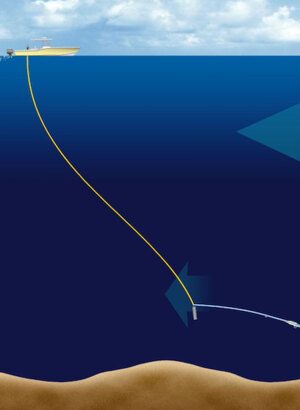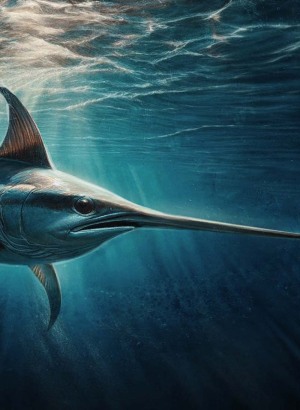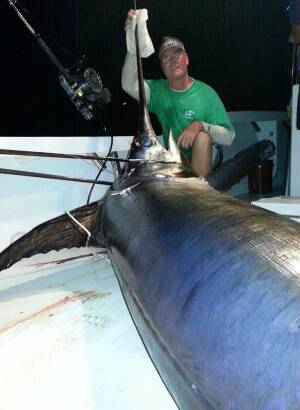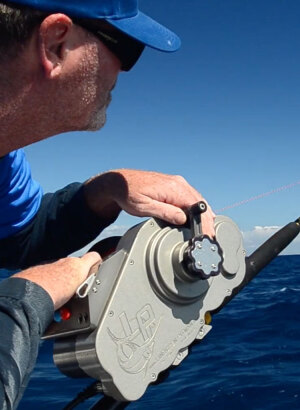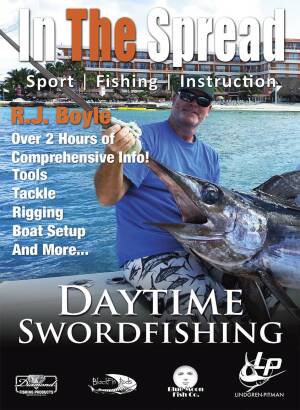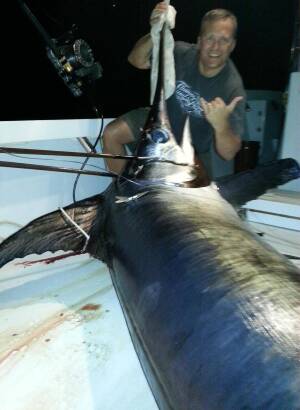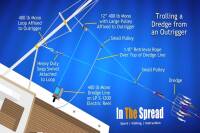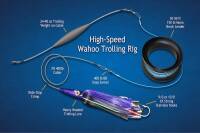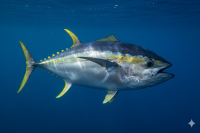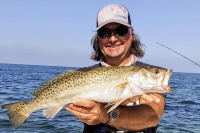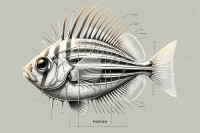Targeting broadbill swordfish at extreme depths requires precision tackle and technique. This deep dropping method puts baits 1,200-1,800 feet down where swords hunt structure. With proper preparation and practice, anglers of all skill levels now catch these powerful gamefish during daylight hours.
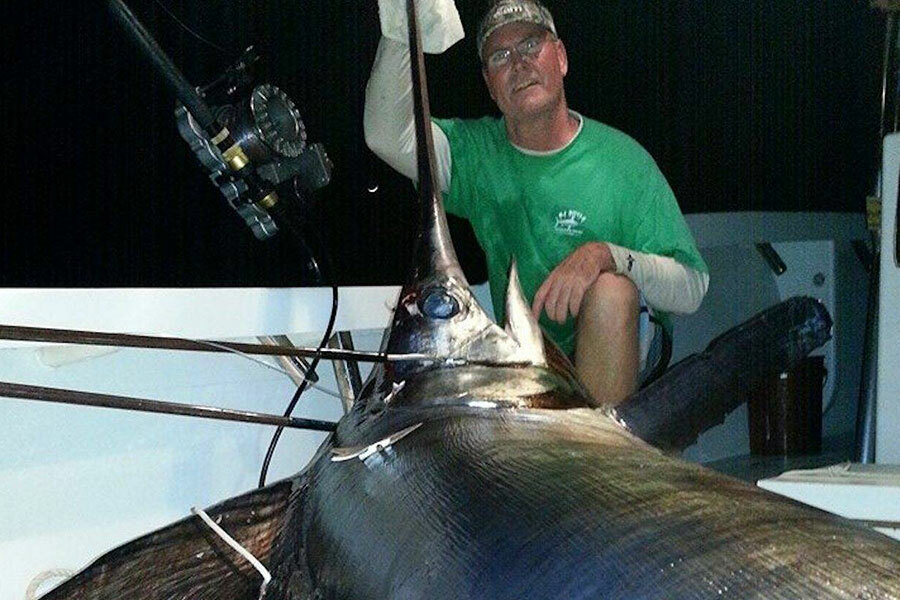
Daytime Swordfish: Deep Drop Tips for Broadbill
Daytime Swordfishing: Guide to Deep Dropping for Swordfish
Daytime swordfishing has transformed from an elite angler's pursuit into an accessible offshore adventure. With the right tackle, technique, and bottom knowledge, you can target these ocean giants in 1,200 to 1,800 feet of water during daylight hours. This guide breaks down everything you need to know about deep dropping for swordfish, from finding structure to handling heavy currents.
What Is Daytime Swordfishing?
How Deep Do You Need to Fish for Daytime Swordfish?
- Line management: With 2,500+ feet of line out, even small boat movements affect your presentation
- Bite detection: Subtle takes from swordfish feeding on bottom can be nearly impossible to see without proper technique
- Current variations: Surface currents differ from deep currents, complicating your drop trajectory
- Hookset challenges: Setting the hook through that much line requires understanding leverage and rod position
Essential Gear for Your Daytime Swordfish Setup
- High-capacity electric reels rated for 80-130 pound braided line
- Monofilament or fluorocarbon leader material (200-400 pound test)
- Lead weights (3-5 pounds depending on current)
- Circle hooks sized appropriately for your bait (10/0 to 12/0)
- Multiple rigged baits (squid, mackerel, or bonito)
- Extra terminal tackle (leads, crimps, swivels, leader coils)
- Flying gaffs with secure lanyards
- Buoy lines and markers pre-rigged and ready
Where to Find Swordfish: Reading Bottom Structure
Swordfish bottom structure is everything in this fishery. These fish are structure-oriented predators that use underwater topography to ambush prey and shelter from currents.

Target These Bottom Features
- Seamounts: Underwater mountains that rise from the seafloor, creating current breaks and baitfish concentrations
- Rock piles: Hard bottom areas that attract crustaceans and smaller fish
- Drop-offs and break lines: Depth transitions where different temperature layers meet
- Divots and depressions: Bottom irregularities that create current eddies
- Canyon edges: Sharp depth changes that funnel baitfish
Two Approaches to Finding Productive Bottom
How to Drop Baits for Swordfish: Step-by-Step Technique
Deep dropping for swordfish requires more finesse than you might expect. You can't just open the bail and let everything free-fall. Here's how to execute clean drops in various current conditions.
Dropping in Light Current
- Position your boat: Idle forward slowly as you begin lowering your bait
- Control the descent: Use light thumb pressure on the spool to prevent tangles
- Stretch the leader: Keep moving forward until your lead and leader fully extend behind the boat
- Begin the drop: Gradually increase free-spool speed as the rig drops away from the boat
- Feel for bottom: Watch your line and depth counter, slowing 50 feet before expected bottom contact
Dropping in Heavy Current
- Start with the current: Begin your drop while driving in the same direction as the surface flow
- Stretch everything out: Get at least 200 feet of line out with your rig trailing cleanly behind
- Turn into the current: Pivot the boat to stem the current, creating tension that keeps everything stretched
- Drop with precision: As you stem the current, lower your bait while maintaining forward momentum
- Hit your target: This controlled descent lets you place baits exactly where you want them
Common Dropping Mistakes to Avoid
- Free-spooling too quickly: Creates tangled leaders and missed bottom contact
- Driving over your rig: Happens when you don't account for current push
- Putting out too much line: Makes bite detection nearly impossible
- Not stretching the leader: Results in twisted terminal tackle and poor presentations
Before You Leave the Dock: Preparation Checklist
Preparation makes the difference between catching swordfish and wasting an expensive offshore run. Here's what you need squared away before your first bait hits the water:
- Rig multiple baits the night before: Have at least 5-7 complete rigs ready to fish
- Organize terminal tackle: Sort leads, crimps, and hardware into accessible containers
- Spool backup line: Carry extra braided line for mid-trip respooling if needed
- Pre-rig gaffs and buoys: You won't have time once a fish is hooked
- Check drag settings: Test every reel under load before leaving the dock
- Mark your proven spots: Load GPS coordinates and study bottom charts
- Pack extra leader material: Bring at least 200 yards more than you think you need
Learning from Experience: Getting Started with Daytime Swordfish Fishing
Building Your Confidence
How much does it cost to get started with daytime swordfishing?
Expect to invest $2,000-$4,000 in specialized tackle including electric reels, heavy rods, braided line, and terminal tackle. Fuel and bait add another $300-$500 per trip depending on your run distance. The costs are higher than most offshore fishing, but the reward of landing a 200-pound broadbill makes it worthwhile.
What's the best bait for daytime swordfish?
Squid remains the most popular and productive bait, though rigged mackerel, bonito, and Spanish mackerel all produce. The key is proper rigging with your hook positioned to maximize hookup rates. Most successful crews carry multiple bait types and experiment based on conditions.
Can you catch swordfish from shore or do you need a boat?
Daytime swordfishing requires offshore boat access to reach the 600-1,800 foot depths where these fish feed. Shore fishing for swordfish isn't feasible given the depth requirements and distance from land.
How long do you soak a bait for swordfish?
Typical soak times range from 20 to 45 minutes per drop. Some crews prefer checking baits every 20 minutes to ensure proper presentation, while others let baits sit longer on proven structure. Experiment to find what works in your area.
What's the difference between daytime and nighttime swordfish fishing?
Nighttime swordfishing targets fish that rise to feed in the water column (150-400 feet), while daytime techniques target bottom-feeding swords at extreme depths. Nighttime fishing uses lighter tackle and drifting techniques, while daytime requires precise bottom drops and heavy gear.

